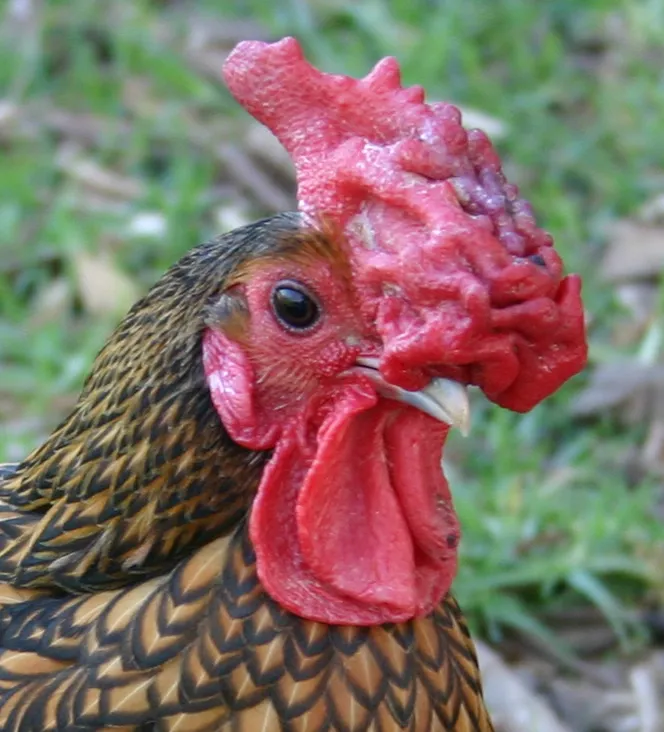Why Roosters Have Wattles
Research suggests a rooster’s wattle may help gain a hen’s attention
Roosters are funny-looking creatures. They have a red bit that sticks out from the top of their heads—the comb—and another that dangles beneath their chin—the wattle. And then they perform this little dance called "tidbitting" (see first part of video below), in which they make sounds (food calls) and move their head up and down, picking up and dropping a bit of food.
Research has shown that when hens are choosing a mate they prefer roosters that have larger, brighter combs and ones that frequently perform the tidbitting behavior. This makes sense because the characteristics of the comb have been shown to correlate with how healthy the male is, and tidbitting behavior provides the hen with nutritionally important food items and shows the male’s status. But the presence of the wattles has long been a puzzle because they haven't been shown to serve a similar purpose.

Carolynn Smith (a friend and former colleague) and her current colleagues at Macquarie University in Australia set out to discover the purpose behind the wattle by studying red junglefowl (Gallus gallus), which are the wild brethren of the chickens we eat (their study appears in the journal Animal Behaviour). Cutting off the wattles of roosters and seeing how the behavior of hens changed wasn't an option. Instead, Smith created four animated roosters. The animated roosters (see second part of the video below) all acted the same, performing the tidbitting routine over and over, and they all looked the same, except for their wattles. One had a normal wattle, one was missing his, a third had a wattle that didn't move, and the fourth had an extra floppy wattle.
A test chicken would be placed inside a test pen with two "audience hens," a couple of buddies intended to make the test hen more comfortable in the less familiar surroundings (fowl are social creatures). One of the videos was then played for the test chicken and her response was recorded: How quickly did she respond to the animated rooster? How quickly did she start searching for food (the normal response to a male tidbitting)? And how long did she search for food?
The test hens responded more quickly to the tidbitting males that had the normal or stationary wattles, less quickly to the one with the extra floppy wattle (the wattle moved so much that it swung up the side of the rooster's head and appeared much smaller than it was) and slowest to the male lacking wattles. After the hen's attention was gained, though, she reacted about the same to each of the four animated chickens. Smith suggests that the wattle helps a rooster gain a hen's attention when he is tidbitting, rather like a human guy wearing flashy clothes while doing his best dance moves to try and pick up chicks.
/https://tf-cmsv2-smithsonianmag-media.s3.amazonaws.com/accounts/headshot/Sarah-Zielinski-240.jpg)
/https://tf-cmsv2-smithsonianmag-media.s3.amazonaws.com/accounts/headshot/Sarah-Zielinski-240.jpg)